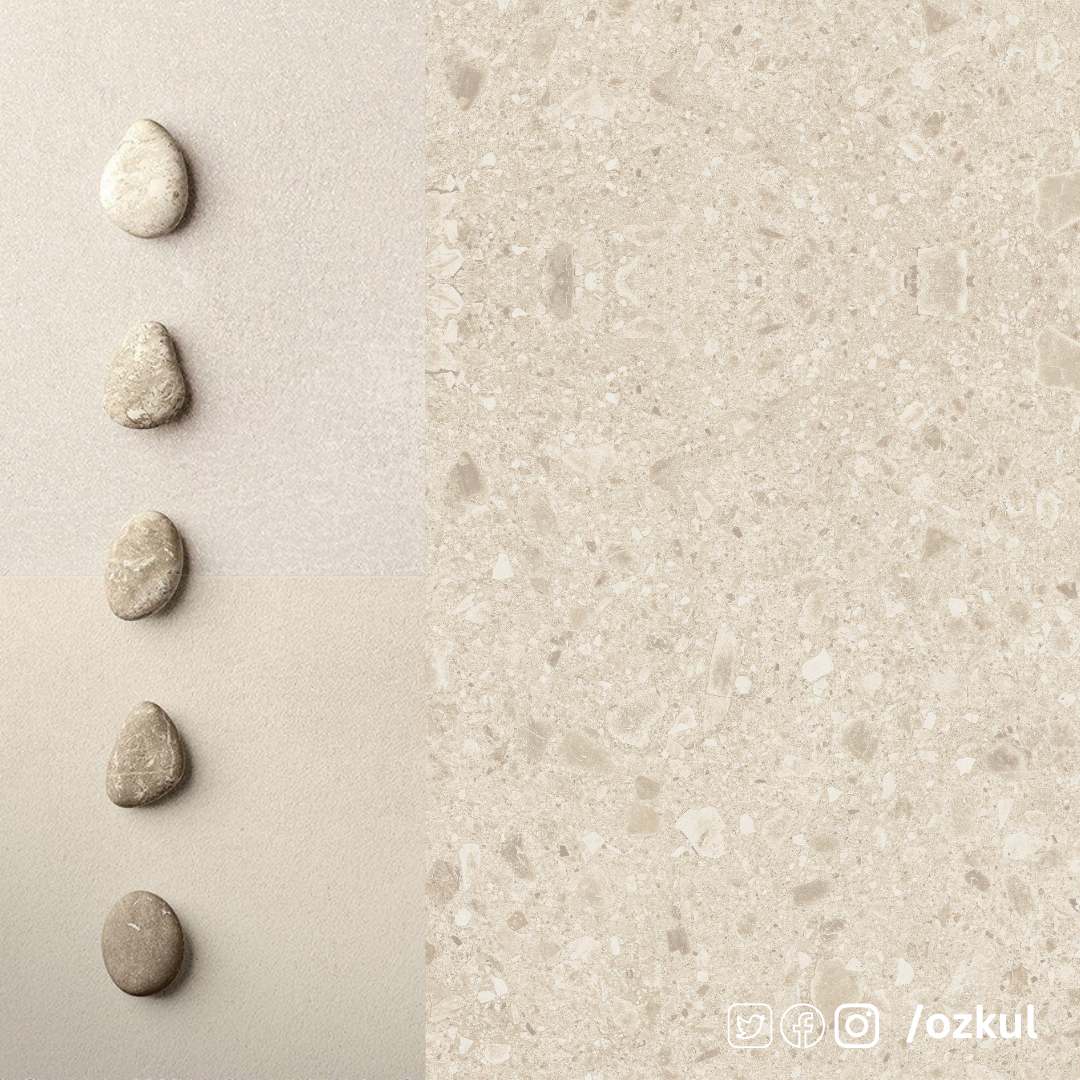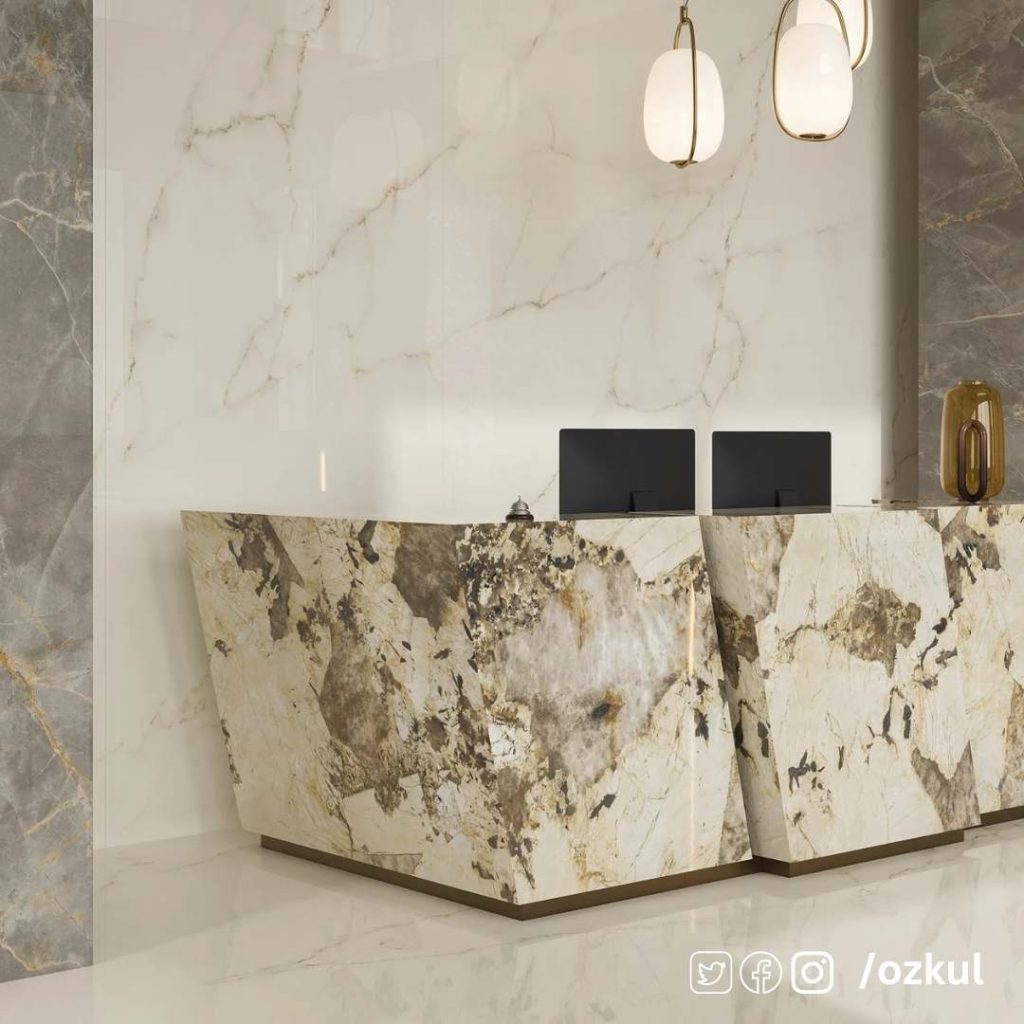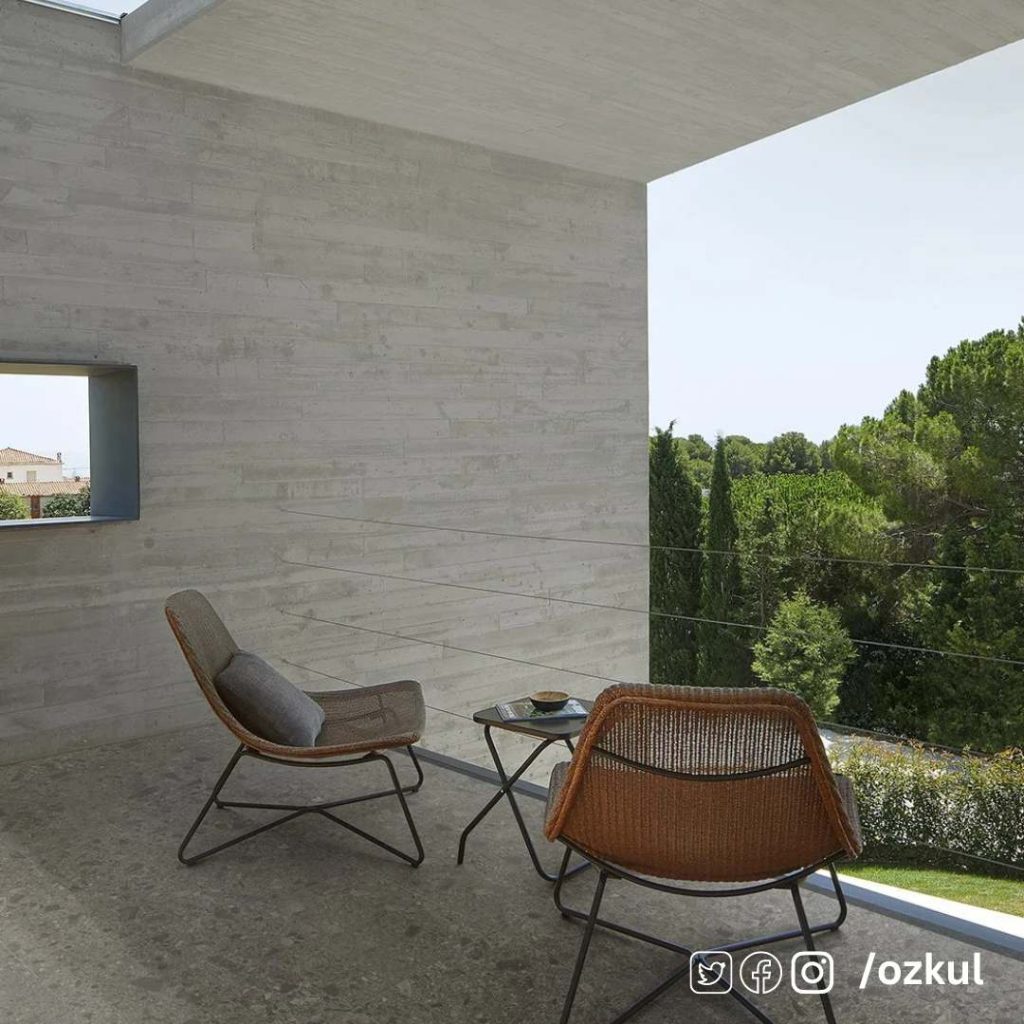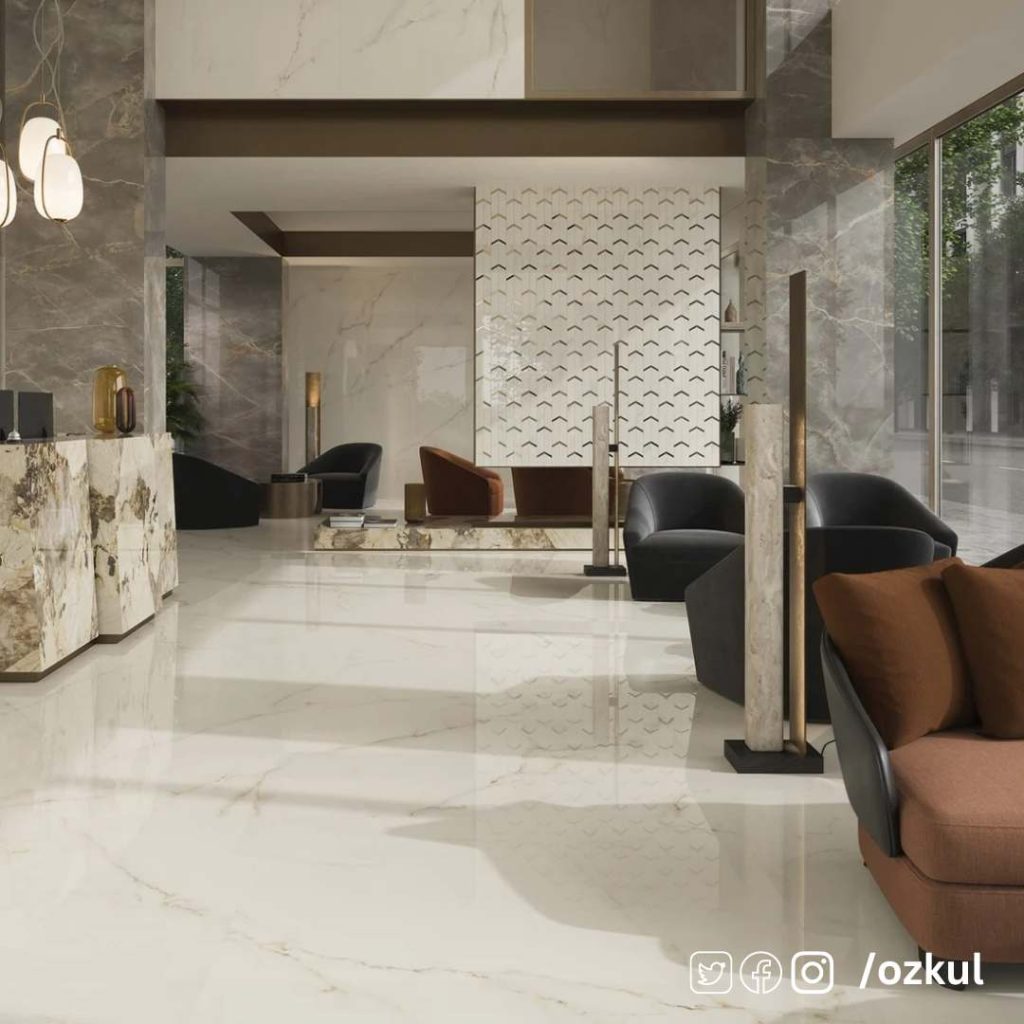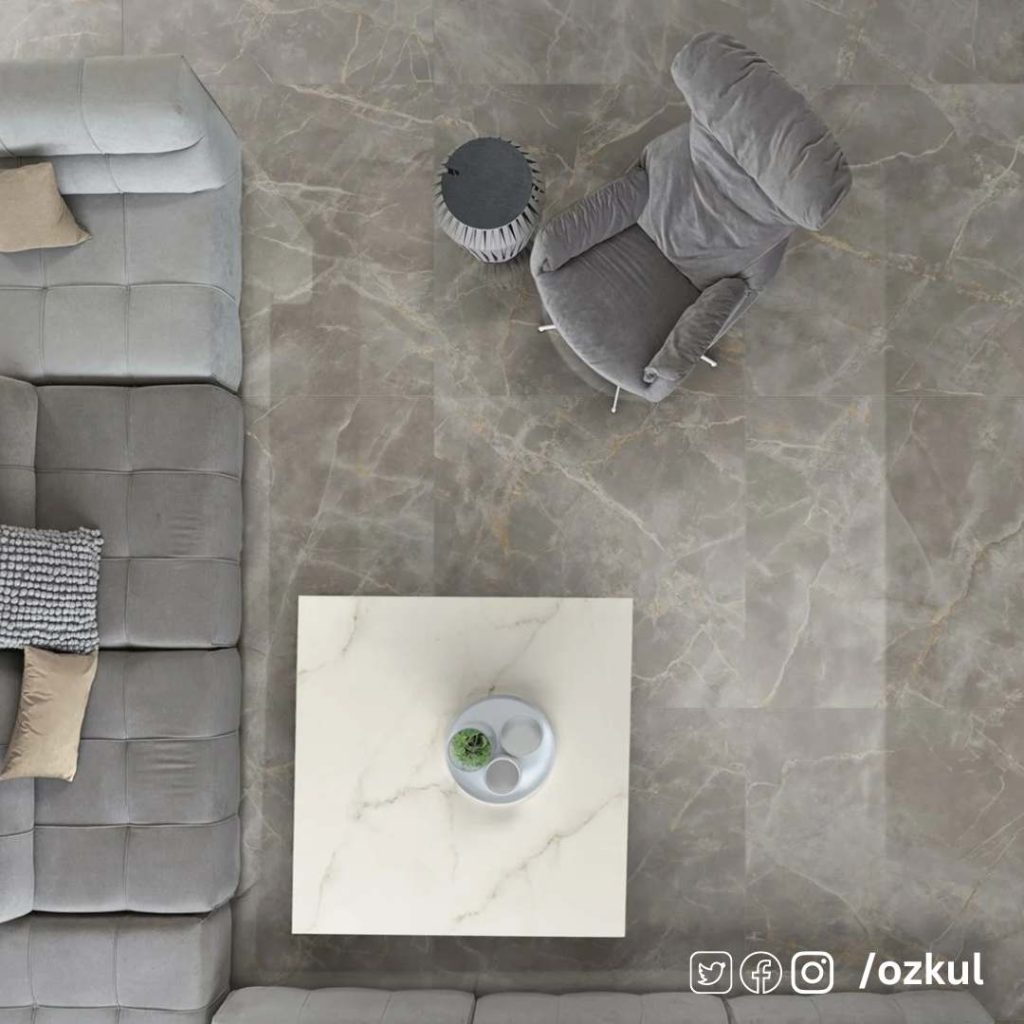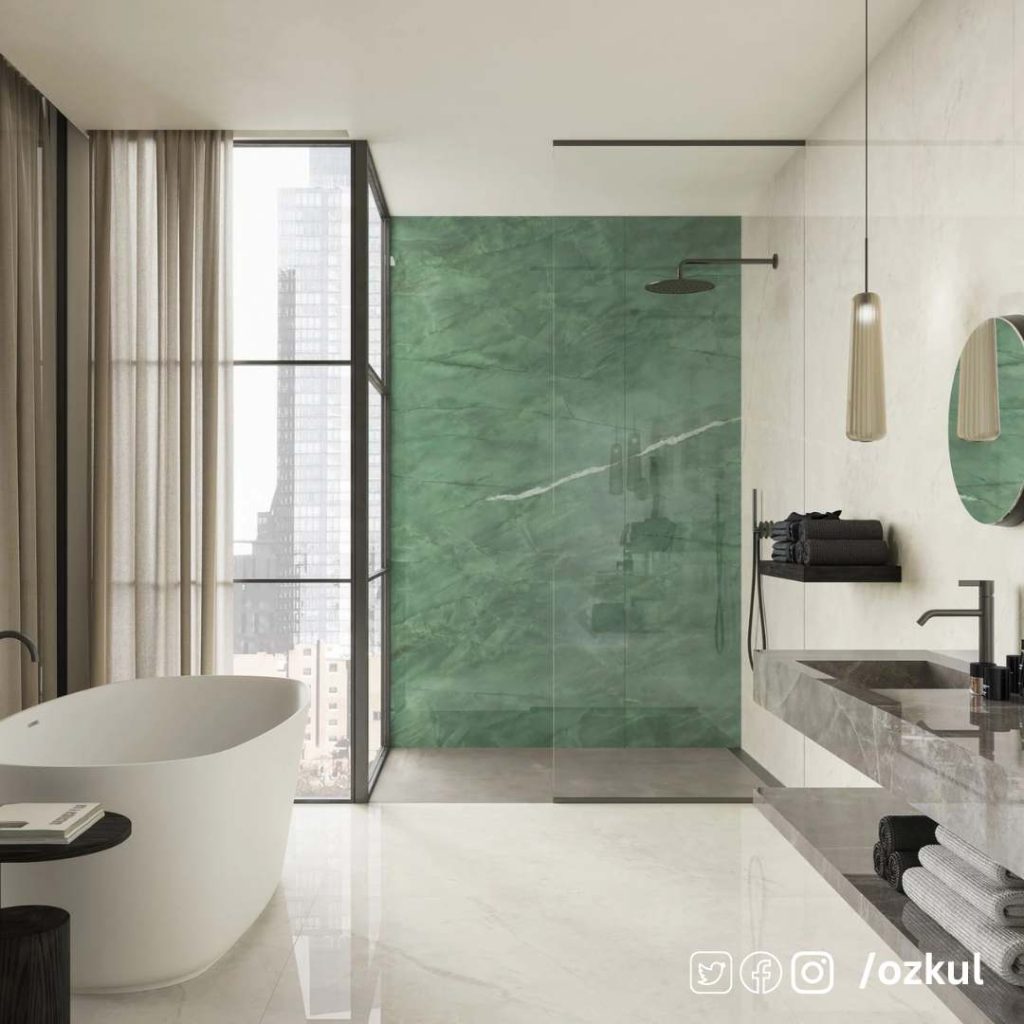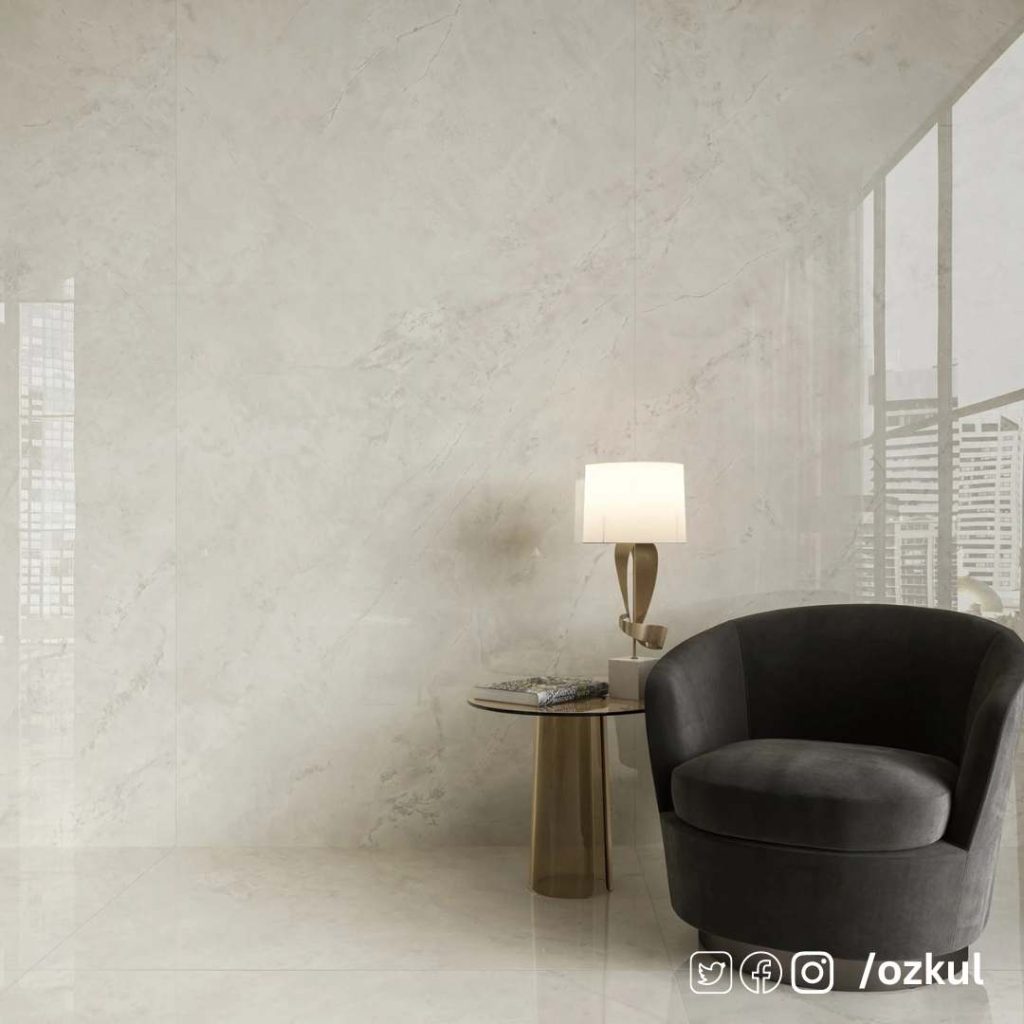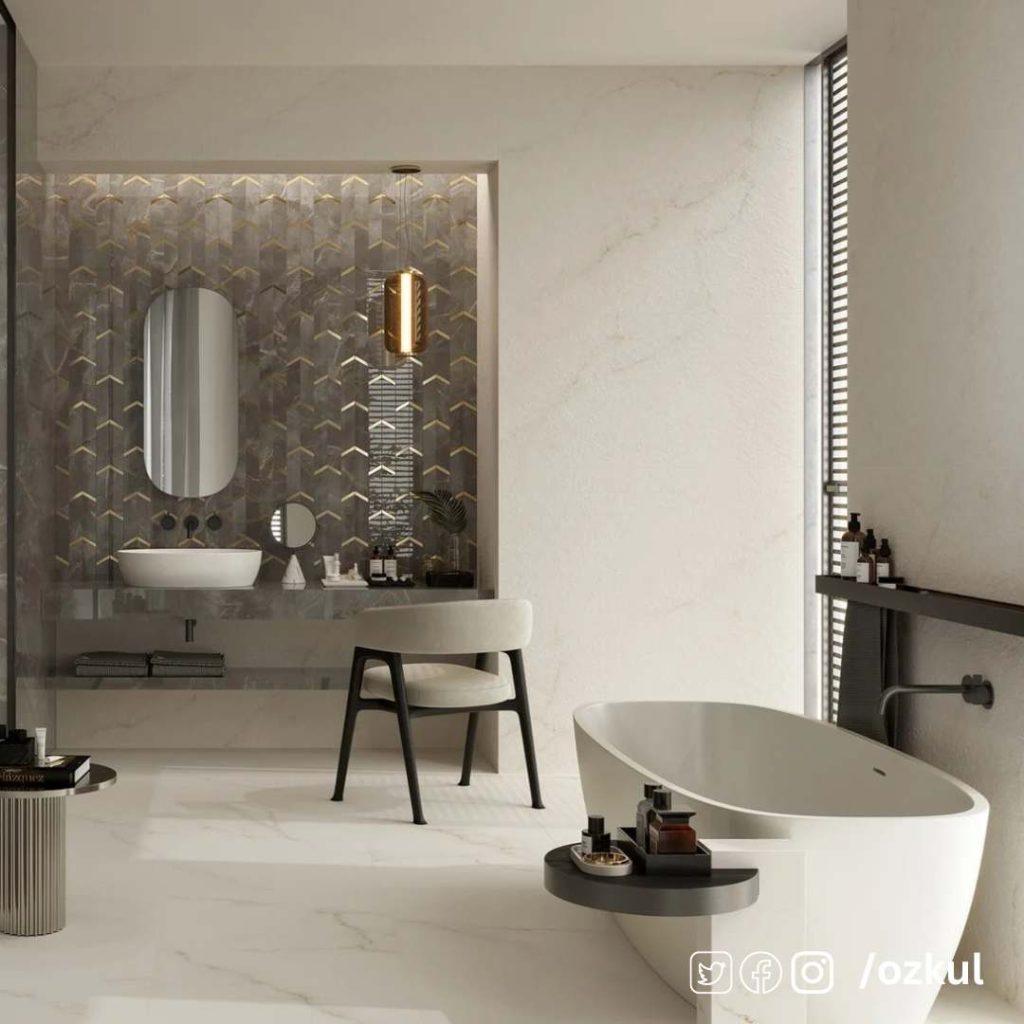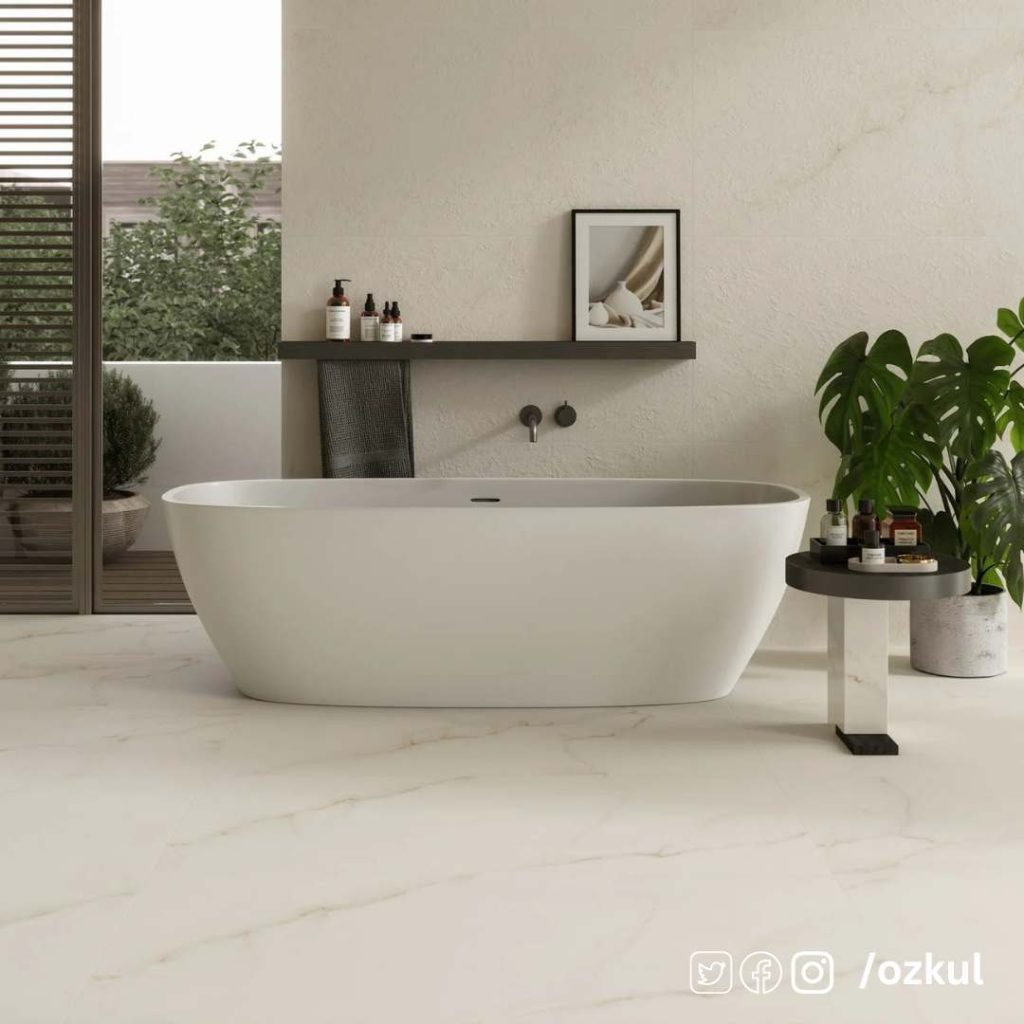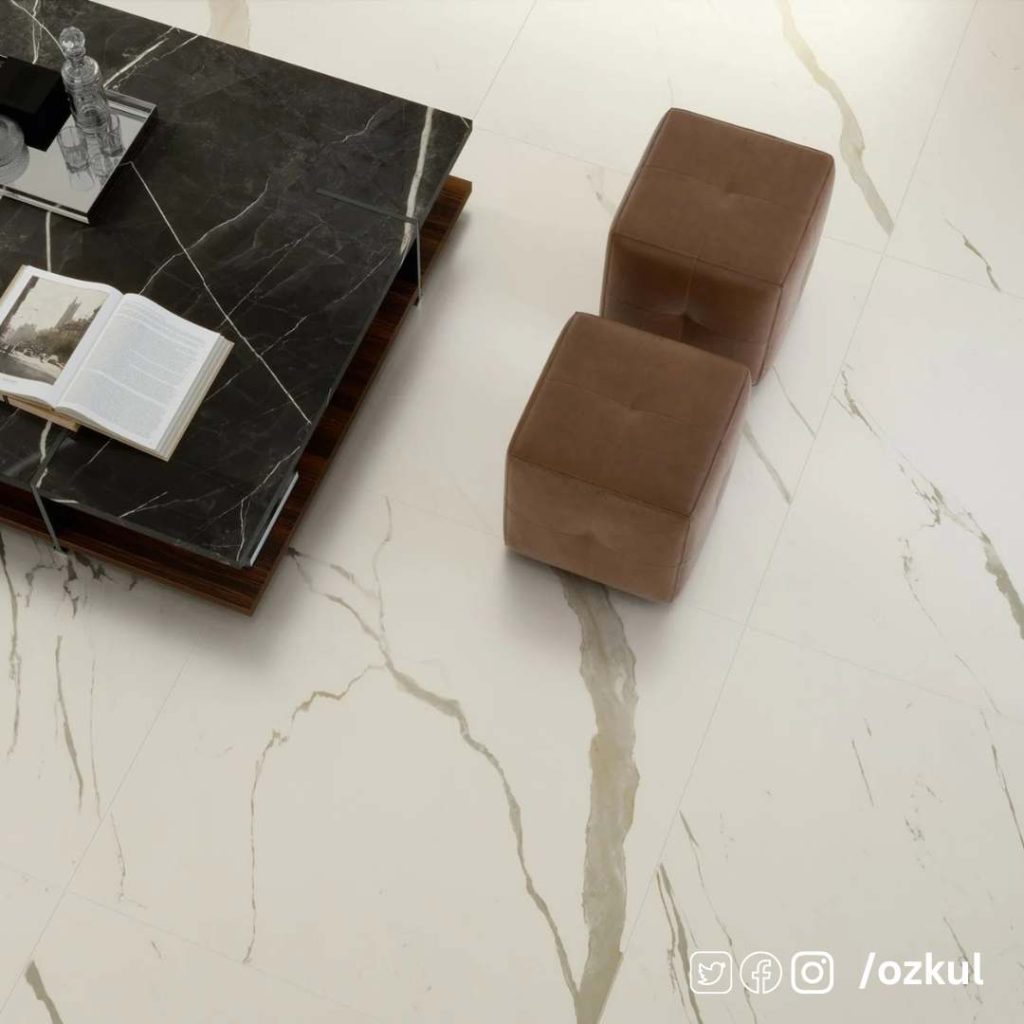The history of terrazzo goes back about 500 years and dates back to Renaissance Italy. Terrazzo is a kind of composite material that has been used for floor-covering purposes for hundreds of years. The crumbs of marble, granite, quartz, glass, or other materials are mixed with a binder such as cement or resin and then poured onto the floor and expected to solidify. After this material has solidified, it is made with stone step by step to make the surface smooth and shiny. This process is repeated several times and a durable and beautiful surface is formed.
Terrazzo is practical and low-maintenance at the same time. Compared to other floor options, such as carpet or wood, Terrazzo can withstand heavy foot traffic and does not wear easily. It is also clean and easy to maintain and is a popular choice for areas with heavy traffic. Jul.
In addition to its functional and aesthetic advantages, Terrazzo is also environmentally friendly. The material is made from natural materials and can be recycled and reused, reducing waste and helping to conserve resources. Artificial terrazzo varieties are used a lot.
Terrazzo is still produced today using natural materials and is environmentally friendly. This helps Terrazzo to remain a durable and beautiful floor-covering alternative since it has been used in the past.
Types of Terrazzo Tiles
The beauty of terrazzo lies in its versatility and customization options. The sizes and colors of the materials used in the mixture can be different, which allows designers and architects to create unique patterns and designs. This makes it an ideal choice when a durable and beautiful floor material is required in public places.
How many types of terrazzo are there
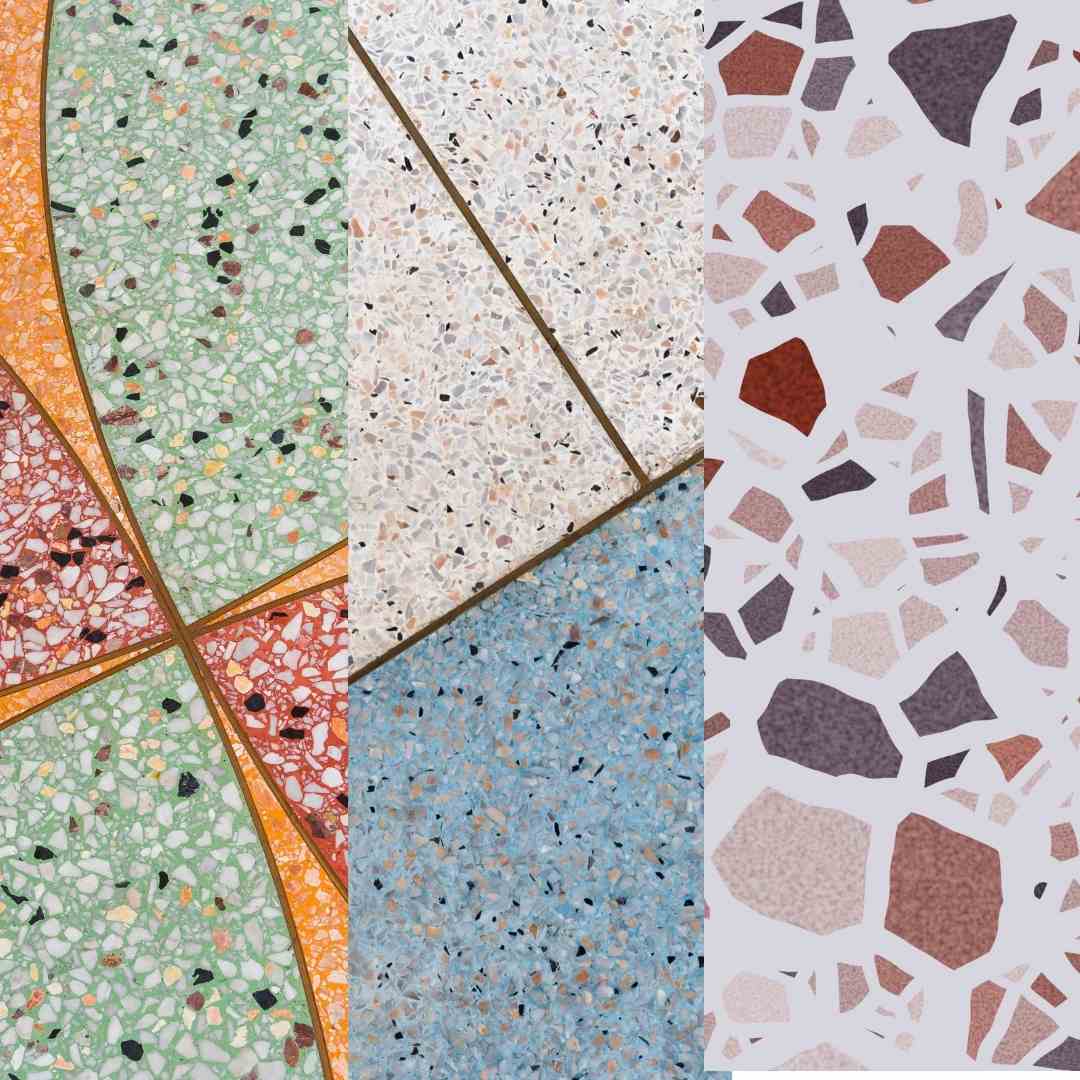
Terrazzo has many different material, color, and pattern options, and these options give rise to various types of terrazzo. Generally, there are two basic types of terrazzo: composite terrazzo and mosaic terrazzo.
Composite Terrazzo: Composite terrazzo are floor coverings in which the crumbs of natural materials such as marble or granite are combined with a binder such as cement or resin. Composite terrazzo is reinforced by placing it on top of layers of colored materials and is presented as a floor covering that gives integrity.
Mosaic Terrazzo: Mosaic terrazzo is floor coverings in which small particles of marble, granite, or glass are combined with a binder such as cement or resin. Mosaic terrazzo offers an older and classic look and is considered an alternative to patterned floor covering.
In addition, terrazzo’s color options, material options, and pattern options also determine the various types of terrazzo. These options make terrazzo suitable for all types of spaces and all types of floor designs.
How to make a Terrazzo Floor?
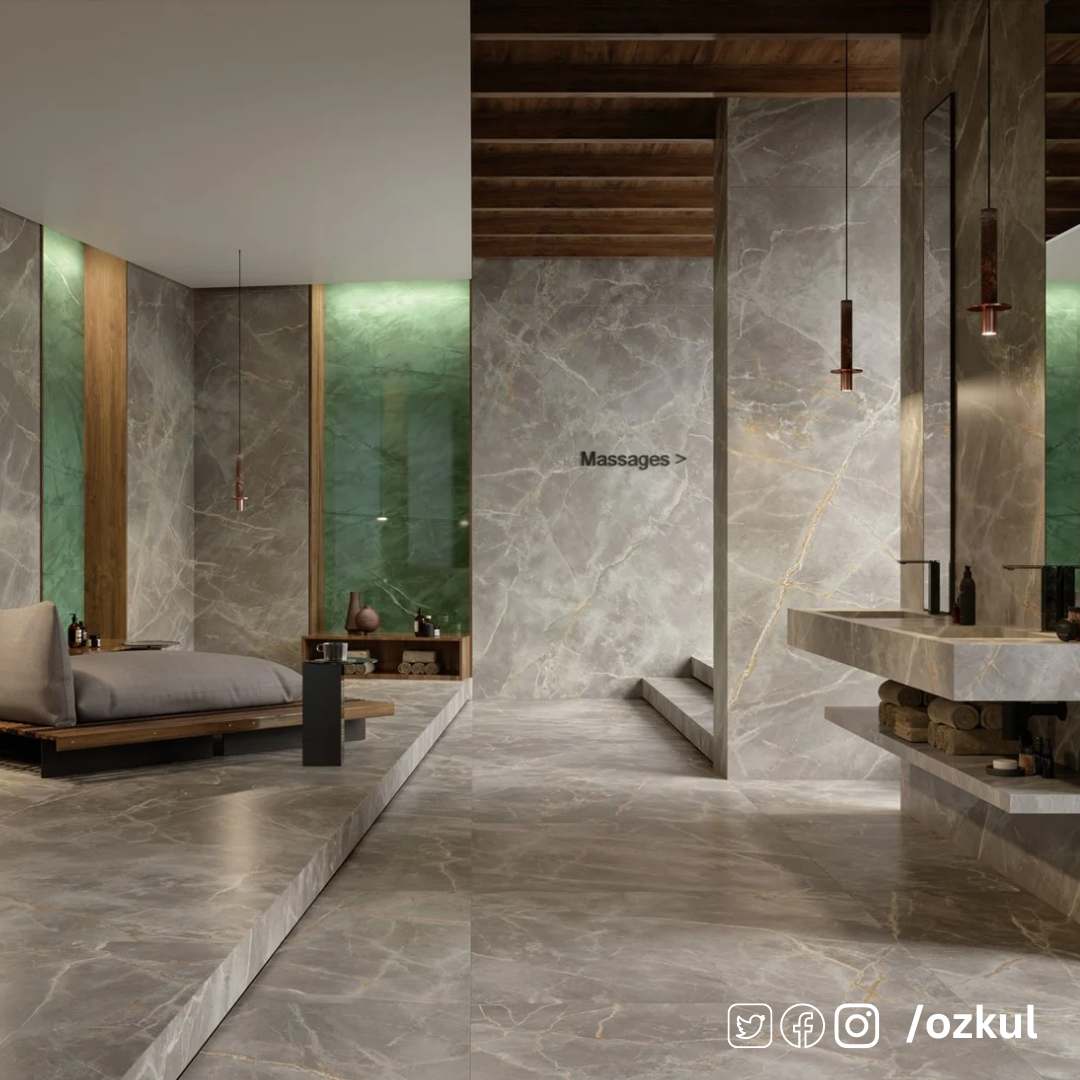
Terrazzo floor construction is the coating of a concrete base used as a floor covering with crumbs of natural materials such as marble or granite. Terrazzo floor construction may involve the following steps:
Preparation: The floor needs to be prepared and cleaned. If there is an old floor covering, it should also be removed and the necessary leveling should be done for the floor.
Base preparation: The base should be cut to the thickness of the concrete required for the construction of the terrazzo floor. The base should also be smooth and smooth.
Preparation of terrazzo mixture: Terrazzo mixture consists of components such as crumbs of natural materials such as marble or granite, cement, and water. The mixture is prepared in such a way that it is applied at a certain thickness.
Application: Terrazzo mixture is applied to the base and spreads smoothly and smoothly. On the surface of the terrazzo mixture, extra materials (for example, marble particles or glass) can be added to create the desired patterns and colors.
Drying: The terrazzo mixture is left to dry and wait for about four to six hours.
Profile making: Dried terrazzo, the profile is made with a profile machine. The profile aims to provide a clearer view of the terrazzo floor and provide a better grip.
Staining: The dried terrazzo is treated with a staining agent and dried after the staining process is completed.
Polishing: The terrazzo floor is polished by a polishing machine and a final layer of gloss is added.
These steps indicate an average path for terrazzo floor construction, and each terrazzo floor construction may differ.
How to clean a terrazzo floor?

Cleaning terrazzo floors is an important step that maintains a durable and long-lasting appearance. The following steps show a simple way that can be used for cleaning terrazzo floors:
Wiping of dust and waste: Terrazzo floor must be wiped off the dust and waste first. This will prevent harmful particles from circulating on the floor, and will also improve the appearance of the floor before cleaning.
Damp wiping: Terrazzo floors should be wiped with a damp cloth or sponge. This dissolves dust and stains on the floor, making it easier to clean.
Removing stains: If there are stains, a suitable stain remover can be used for terrazzo floors. The stain remover should be applied to the floor and left to stand, then wiped with a damp cloth.
Dry wiping: Finally, terrazzo floors should be wiped with a dry cloth. This allows the moisture residues on the floor to dry out and maintain a shiny appearance.
These steps are a simple way to clean terrazzo floors and may not be suitable for every terrazzo floor. Firstly, according to the characteristics of the material on the floor and the types of stains or wastes on the floor, a more special cleaning method may be required.
Where is the terrazzo floor used?
Terrazzo floor is used in many different areas today. Terrazzo floors are widely used, especially in the following areas:
Buildings: Terrazzo floors are one of the frequently used floor coverings in common areas of buildings such as halls and stair floors.
Industrial areas: Terrazzo floors are an ideal option for floor coverings of industrial facilities, factories, and warehouses.
Commercial areas: Terrazzo floors are often used in the interiors of commercial areas. For example, terrazzo floors are used in many design projects for shops, cinemas, restaurants, and hotels.
Houses: Terrazzo floors can also be used in the interiors of houses. Terrazzo floors, especially in areas such as bathrooms, kitchens, and living rooms, offer a permanent and durable floor-covering option.
Public areas: Terrazzo floors are often used in the interiors of public areas. For example, terrazzo floors in public buildings such as hospitals, schools, and libraries are an ideal option in terms of hygiene and durability.
The reason why terrazzo floors are used in many different areas is that they have durability, aesthetic appearance, hygiene, and long service life. Terrazzo floors, due to the fact that they are also a versatile option, offer different design options and allow them to be decorated in many different styles.

